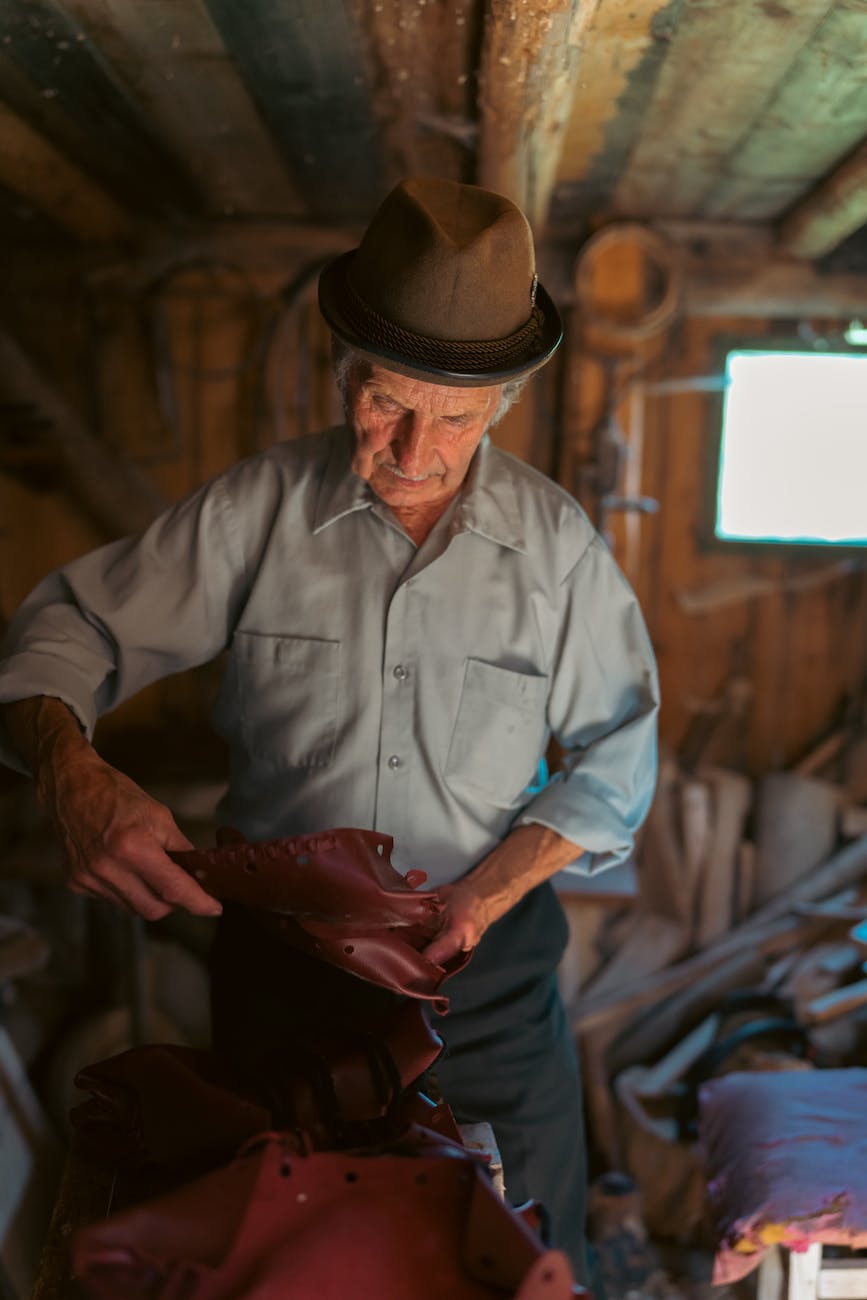The World of Leatherworking: A Closer Look at Time-Honored Techniques
Selecting Quality Leather Hides and Skins
The foundation of fine leatherwork begins with procuring high quality hides and skins from reputable suppliers. Characteristics to assess include:
- Thickness – Thinner 1-2 oz skins up to heavy 9+ oz hides for rugged use
- Texture – Full grain with natural markings vs suede’s napped uniformity
- Flexibility – Pliability indicates resilience; stiffness restricts shaping
- Origin – Cow, bison, deer, goat, lamb, reptile, etc. impact properties
- Treatment – Waxes, oils, and finishes affect performance and look
Examine hides closely and test samples before investing to ensure suitability for planned techniques and products. The raw material choices steer the entire design journey.
Cutting Leather – Essential Skills and Blades
Cutting patterns accurately is crucial for quality assembly and avoiding costly leather waste. Sharp blades and careful technique prevent issues:
- Use extremely sharp X-Acto or scalpel blades frequently replaced
- Secure leather on cutting surface; never eyeball and cut freehand
- Keep blades perpendicular and move leather against ruler for straight lines
- Work on self-healing mats to protect leather, blades, and work surfaces
- Account for stretch and flaws when laying out patterns to cut
- Skive edges where seams will overlap for flexibility
There is no shortcut around fresh sharp blades when working leather. Dullness causes drag, errors, and frustration. Mastery comes from practice and patience.
Decorative Hand Tooling Techniques
Meticulous hand tooling transforms plain leather into artworks exhibiting refined craftsmanship. Common techniques include:
- Stamping – Using struck tools to imprint raised designs
- Modeling – Shaping texture and dimension freehand
- Carving – Incising outlines and background to make patterns pop
- Embossing – Pressing shapes into underside using shaped tools
- Stippling – Dot textures created through repeated hammer strikes
- Casing – Dampening leather then molding into forms
Hand Stitching Leather – Mastering Needles and Thread
Carefully hand-sewn leather exudes tradition, luxury, and longevity that machines cannot replicate. The foundations include:
- Needles – Using specialized harness and leather needles
- Thread – Selecting durable waxed linen options
- Spacing – Setting stitch lengths based on leather type
-Patterns – Trying techniques like saddle stitch for strength - Edges – Protecting edges with piping before stitching
- Knots – Anchoring neatly on backside; no exposed knots
Proper needles, thread, and care create handsome results ready to outlive trends. Hand stitching meditatively transforms pieces with artisan elegance.
Burnishing and Finishing Raw Leather Edges
Final edge finishing polishes project appearance while preventing damage from handling or moisture. Key steps:
- Beveling – Shaping smooth angled edge profiles
- Sanding – Smoothing and removing burs and fuzz
- Burnishing – Rubbing vigorously to compress and harden edges
- Painting – Applying dye or finish for moisture protection
- Polishing – Buffing with wax or gum tragacanth solution
- Protecting – Masking off surfaces to keep finishes strictly on edges
Burnished edges withstand bumps and integrate seamlessly into projects with a clean symmetry. Finishes prevent unattractive water stains and deterioriation.
Custom Leather Dyeing Techniques
Dyeing refines leather’s appearance through an immense palette of opaque, translucent, distressed, antiqued, and hand-mixed colors. Useful techniques include:
- Hand Dyeing – Applying leather dyes by brush, sponge, cloth
- Resists – Blocking out areas with wax or rubber cement
- Staining/Glinting – Quick wiping then removing color
- Distressing – Scrubbing then removing color from high points
- Airbrushing – Softly modulating color saturation
- Layering – Building depth through successive tinted coats
Achieving flawless even results without splotchiness takes practice and care. But vibrant custom hues make projects pop.
Forming and Molding Methods
3D bags, cases, armor, and other shaped leather objects rely on strategic cutting, wet forming, and molding techniques:
- Patternmaking – Designing 2D templates that will shape into 3D forms
- Skiving – Thinning the leather at folds and seams
- Cutting – Using sharp blades and specialty punches
- Casing – Dampening then gradually bending into forms
- Molding – Using presses and forms to shape wet leather as it dries
- Retaining – Holding shapes until completely dry and set
With careful planning, vegetable tanned tooling leather can be gently formed into fully functional dimensional objects like bags, pouches, and book covers.
Helpful Leatherworking Tips and Tricks
Various tips refine skills and improve efficiencies:
- Keep leather off worktable edges to prevent cracks and dust
- Let cement dry shiny before bonding; go opaque means overdry
- Apply snaps on liner side only for invisible secure closures
- Use scrap leather strips to protect pieces from clamps and tools
- Blot wet dyes and finishes; rubbing smears and damages
- Tightly roll revamped lace and store in darkness to prevent kinks
Attention to small details separates amateur work from masterful results. Patience and care create heirloom works.
Through meticulous selection of quality hides and thoughtful incorporation of time-honored techniques, leatherworkers honor the venerable medium’s legacy by coaxing functional beauty from it that withstands trends and delights generations. An understanding of leather’s nature guides the hands in creatively shaping utility and meaning from its strong yet supple character. Commitment to preserving irreplaceable generational knowledge through practice keeps these ancient arts alive.
